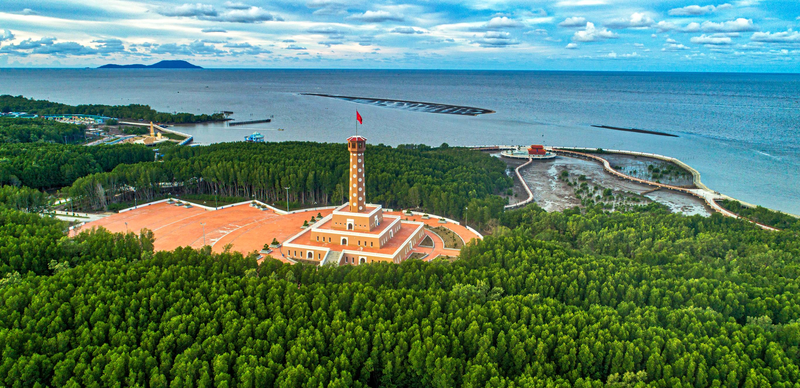The Ca Mau Cape Biosphere Reserve, recognized by UNESCO in 2009, is one of Vietnam’s most important nature reserves. It represents the unique coastal wetland and mangrove ecosystems of the Mekong Delta, showcasing rich biodiversity and supporting the livelihoods of local communities.
1. Location and Scope
Geographical Location: The Ca Mau Cape Biosphere Reserve is situated at the southern tip of Vietnam, in Ca Mau Province, covering districts like Ngoc Hien, Dam Doi, Nam Can, and Phu Tan.
Conservation Area: The reserve spans approximately 371,506 hectares, including the Ca Mau Cape National Park, U Minh Ha National Park, and extensive coastal wetlands.
2. Ecological Characteristics
Mangrove Forests: The reserve features a flourishing mangrove ecosystem, providing habitat for many unique animal and plant species. It is one of the largest mangrove forests in Vietnam and plays a crucial role in preventing soil erosion.
Biodiversity: Home to over 300 animal species and more than 100 plant species, the area supports rare wildlife like the Siamese crocodile, hairy-nosed otter, and several endangered migratory birds.
Wetland Ecosystems: Wetlands in the reserve support numerous aquatic species and amphibians, contributing to environmental stability and providing a source of fishery resources for local communities.
3. Cultural Values and Local Communities
Local Communities: The area is inhabited by ethnic groups such as the Khmer and Kinh, each with unique cultural traditions.
Sustainable Livelihoods: Local people primarily rely on aquaculture, fishing, and mangrove-based products, balancing livelihood needs with the conservation of natural resources.
4. Ecotourism Activities
Mangrove Exploration: Visitors can take boat tours through the mangrove forests, observing migratory birds and exploring the ecosystem.
Experiencing Fisherfolk Life: Engaging in activities like fishing, crab-catching, visiting fishing villages, and learning about local seafood preparation offers a distinctive experience.
Community-Based Tourism: Local villages are open to visitors, allowing them to learn about the culture, lifestyle, and traditions of the inhabitants.
5. Importance and Conservation Efforts
Coastal Erosion Prevention: The reserve plays an essential role in mitigating coastal erosion and protecting shorelines from the impacts of climate change and rising sea levels.
Biodiversity Conservation: As a habitat for endangered species, the reserve is vital for preserving flora, fauna, and maintaining natural ecosystems.
Conservation Initiatives: Both local and international organizations are implementing conservation programs, raising community awareness, protecting mangroves, and promoting sustainable development.
6. Challenges and Development Prospects
Challenges: The reserve faces challenges such as coastal erosion, over-exploitation of natural resources, and the effects of climate change.
Prospects: Ecotourism and community-based tourism offer balanced development opportunities that support both conservation and economic growth. Educational and awareness programs are also contributing positively to the preservation of the area’s natural resources.



